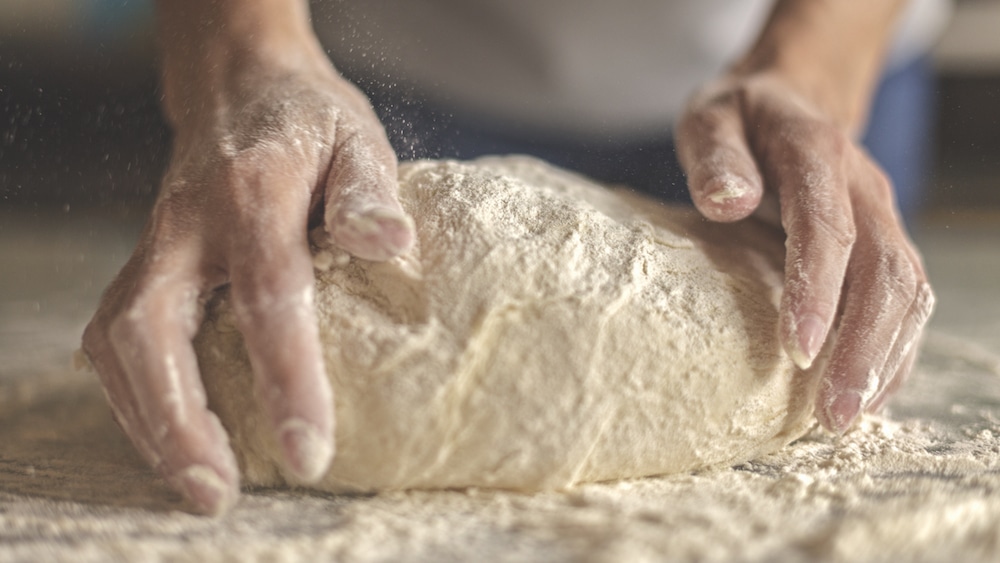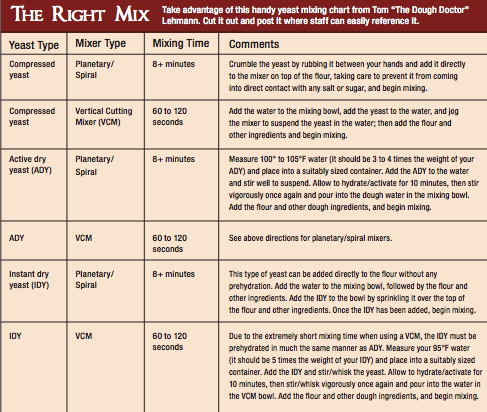Yeast is a single-cell microorganism that has been serving mankind for millennia. Alcohol is probably the most widely recognized by-product of fermentation, but that which is most near and dear to our hearts is the role of yeast in pizza dough and fermentation. Working in combination with various bacteria, yeast, in one form or another, provides the leavening for essentially all of our leavened breads and rolls, including pizza crusts.
The flavor, or taste, of yeast is somewhat musty and said to be much like that of old, wet newspaper. So why does pizza crust sometimes have such a strong yeasty flavor? Well, it’s not the yeast that you’re tasting; it’s a combination of the three main by-products of yeast fermentation—carbon dioxide, alcohol, and acids (acetic, lactic and propionic)—that you are smelling. These are the same by-products that contribute to the wonderful flavor of breads and pizza crusts made from a well-fermented dough.
But it doesn’t stop there; these same by-products affect the protein of the flour by weakening it and making it more extensible, thus reducing the memory, or snap-back characteristics, of the dough, while giving the finished crust a more tender, crispy eating characteristic.
Related: How to achieve the perfect pizza dough mix
Getting Active
Because yeast is a living organism, it responds to the environment it’s placed in, and it has a shelf life beyond which it does not perform well. When placed into cold water, the yeast will be a bit slower to activate, much in the same way as cold storage conditions will slow down the activity rate of the yeast, which allows us to store our dough under refrigerated conditions for three or more days. On the other hand, warm conditions, especially when temperatures approach 95°F, will significantly accelerate the yeast activity to the point where we can get blown dough in less than 12 hours if we aren’t mindful of temperature control.
Instantly Popular
Instant dry yeast (IDY), possibly the most widely used type of yeast in pizza dough, has a shelf life of one to two years at room-temperature storage conditions (65° to 80°F) when unopened. Once packages of IDY and active dry yeast (ADY) have been opened, the remaining product can be stored, tightly covered, in the refrigerator for up to one month—but remember that movement in and out of the refrigerator multiple times could cause condensation to form on the inside of the package and lead to diminished performance of the yeast.
The rock-hard packages of IDY and ADY (ADY can also come in a soft package) are vacuum-packaged to ensure performance of the yeast over its long unopened shelf life. Once opened, the yeast pours freely for easy measurement. If we receive loose packages of IDY or ADY that have traditionally been firm, we have received a “leaker” (air has managed to leak into the package) and we should use this product as quickly as possible in order to get maximum performance from the yeast.
The word “instant” in IDY refers to the rate of hydration, not the fermentative rate of the yeast. Because IDY is fast hydrating, it doesn’t need to be prehydrated before use; instead, the best way to add it to a dough is to simply put it right on top of the flour when you are ready to begin mixing; if you prescale your ingredients, you can mix it in right along with the rest of the dry ingredients.
Even when salt and/or sugar are present under such conditions, there is no harm to the IDY as there would be to compressed yeast under the same conditions. If we should forget to add IDY to our dough while mixing, we can possibly save this dough by adding the IDY dissolved in a small amount of 70° to 75°F water. Then mix for a few minutes to ensure even distribution of the yeast, but be careful not to overmix and heat up the dough too much by mixing too long.
What’s the Difference?
If you’re grappling with the role of yeast in pizza dough, remember this: All three types of yeast perform comparably and result in the same flavor profiles in the finished products when used at the correct substitution levels. As compared to 1 pound of compressed yeast, it would take 8 ounces of ADY, or 6 ounces of IDY plus 10 ounces of additional water, to replace it. Looking at it another way, if you want to replace ADY with IDY, you would use IDY at 75% of the ADY amount; if you want to replace IDY with ADY, you would use 1.33% more ADY than you did IDY.
The newest type of IDY is designed specifically to give maximum shelf life when used in commercial dry mix applications. Other “newer” types of IDY go by a variety of names, including “fast-acting,” “quick-rising,” “high-powered” and “instant premium.” Benefits of this type of yeast can possibly include better performance in colder dough, reduction in mix time, faster fermentation, reduced proofing time, better oven spring and larger finished product volume; and can allow for possible reduction in the level of IDY usage.
While we may not think of these applications as important to us right now, at some time in the future, you may be faced with the challenge of producing your dough at a commissary for delivery to distant stores, and one of these yeasts might be just the ticket you’re looking for to provide your stores with the highest-quality dough, or dry mix from which the individual stores would produce the dough.
As you can see, yeast is a pretty unassuming, everyday product, but there’s a lot of work going on behind the scenes to make sure we get a consistent, high-quality product—in addition to new and improved yeast types designed to meet our most challenging applications.
















